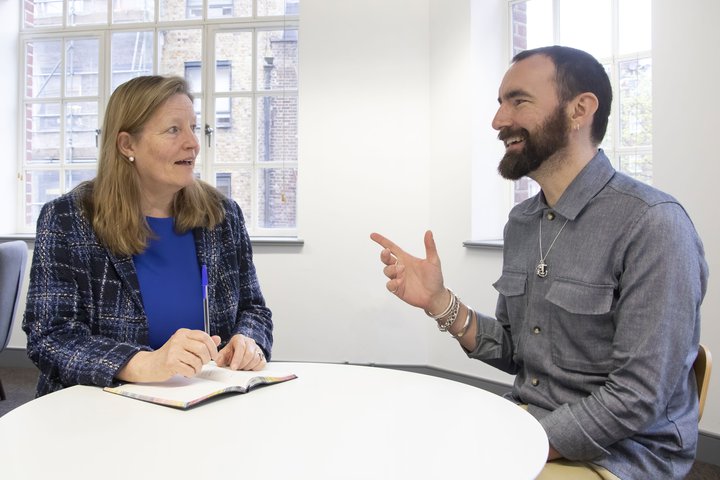No time for AI in leadership industries
Leaders’ days are filled with high-pressure, time-sensitive tasks – important presentations, meetings with the board, driving performance of their teams and influencing a range of external stakeholders.
With 85% of UK executives admitting that AI is inspiring their long-term strategy in business, it’s clear many of us have already integrated AI into our everyday lives.
This year, RADA Business has observed a shift in how clients are integrating it into their working lives. From preparing content for presentations and finessing language for increased impact, to designing agendas and setting team objectives.
So how far can we rely on AI to support those in leadership roles?

“AI undoubtedly changes the landscape for everyone, including us,” says Charlie Walker-Wise, Services Director at RADA Business.
“I recently asked ChatGPT to design a RADA Business programme, just to see what it produced. It obviously looked at what exists of our work on the Web and created something that was not a million miles away from what we might write down. Nothing I’d ever be comfortable sending to a client, but not terrible.
“All the evidence suggests that as AI learns more, and if I had repeatedly improved the prompts I gave it, it would get better and better at this. Maybe even good enough to share with a client. For now, it serves as a great starting point for inspiration.
“Ultimately though, our work doesn’t sit on paper or screens, it’s experienced in board rooms, at conferences, as part of transformation programmes, and always, always, with the human experience at the heart.
“While AI can help us on the journey to get there, the process of organisational change will always have humans, and human behaviour, at its heart. And I don’t know if AI will ever be able to do that.”
But how does this apply in today’s business landscape? A professional services firm recently used AI to generate content for a high-profile speech to external stakeholders. The tone was good, but the structure was off – it laboured minor points, skimmed over more important areas, misrepresented stats and it suffered from a lack of nuanced insights.
Politicians often have a whole team of speech writers who extensively research a topic, the audience and the key messages, before then coaching on the delivery of the speech. Similarly, business leaders also need to put thought into these aspects of their speech and gauge the tone that’s best suited – whether they’re tapping into emotion, confidence, persuasion or empathy. This is where AI can fail, and we must retain focus on humans and human behaviour.
So, how can you best utilise AI for creative writing tasks?
1. Ask for inspiration and prompts to help you begin your task
AI can be a great tool to help inspire your initial scope for a creative task. Ask for starting ideas or prompts around your topic, and then apply your own creative touch to develop the writing.
2. Use explicit instructions to help with style and tone
If your prompt is too broad, you’ll find the results probably won’t match the idea you had in mind. Simple examples of this can be using American English over British English, or using superfluous words.
Ask the AI model to write in the style of a specific author or match the tone of an existing piece of writing to help guide your own content.

3. Be mindful of limitations
AI is an impressive tool, but it’s still in its early stages of development. AI lacks real-world understanding and can also produce content that is factually incorrect, since its main source is the world wide web, which often hosts fake news. Always double check any facts and ask for sources
4. Get a second opinion on your work
Seek a second opinion on your work so you can spot any inconsistencies. This becomes even more essential if your content is being used for speeches or to be given to peers, clients, or stakeholders.

